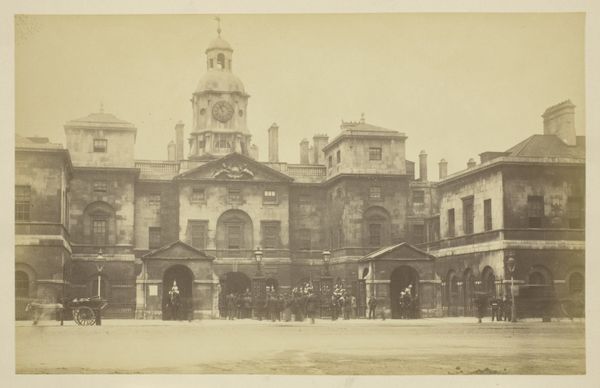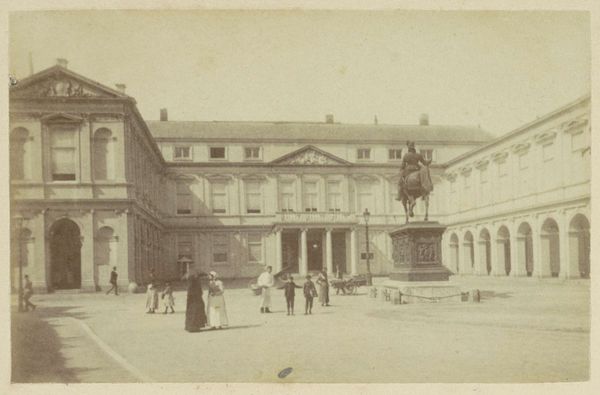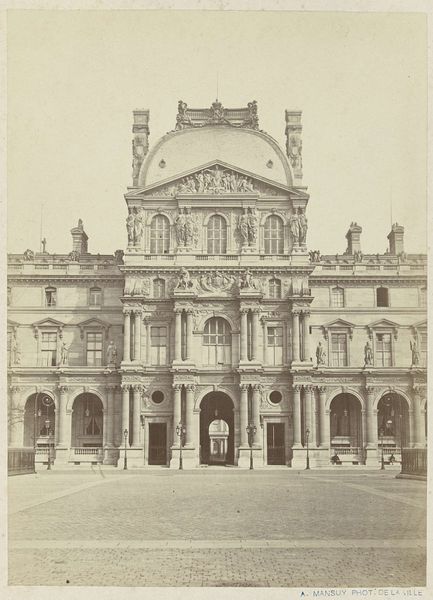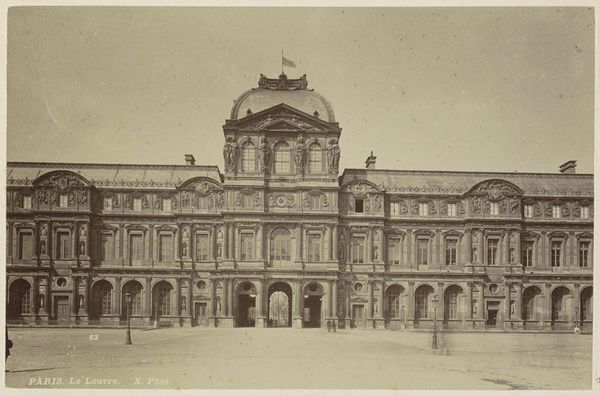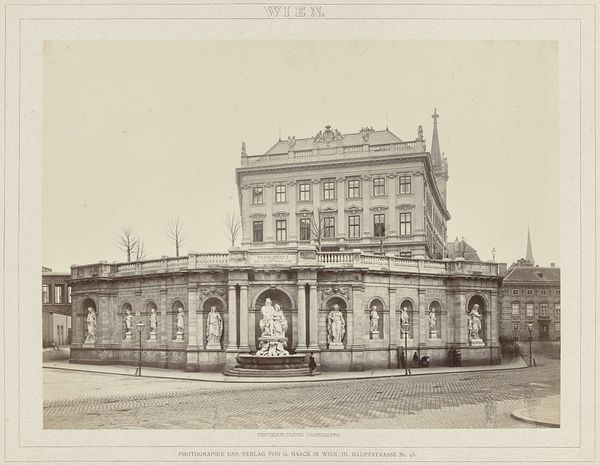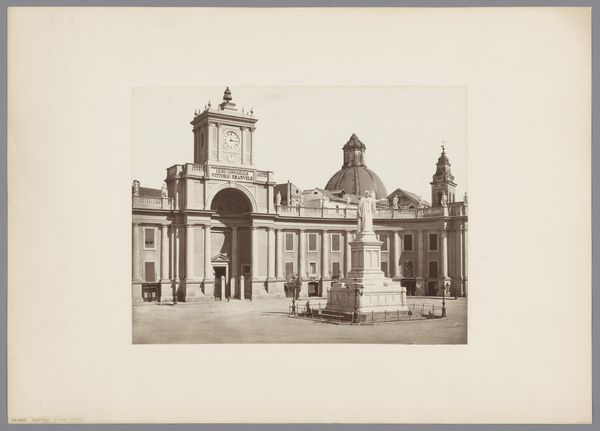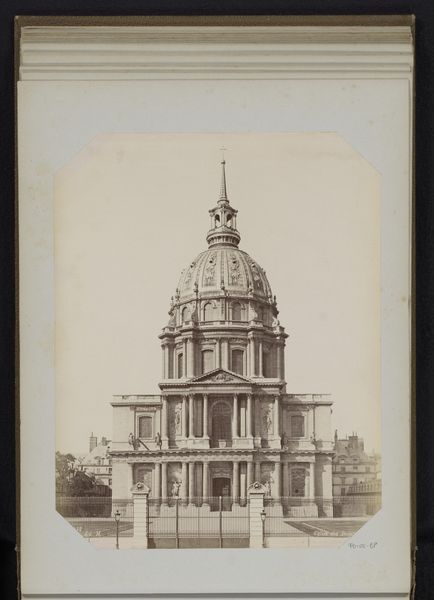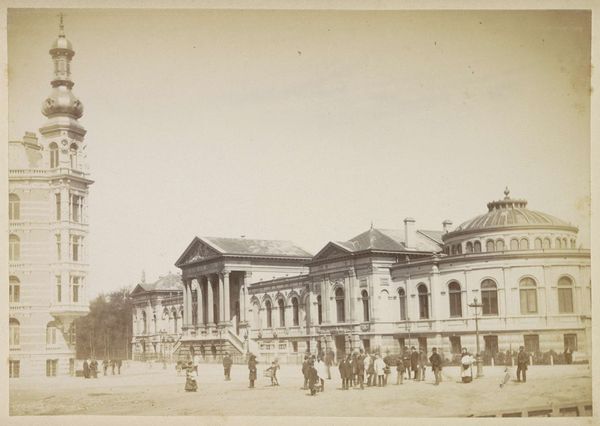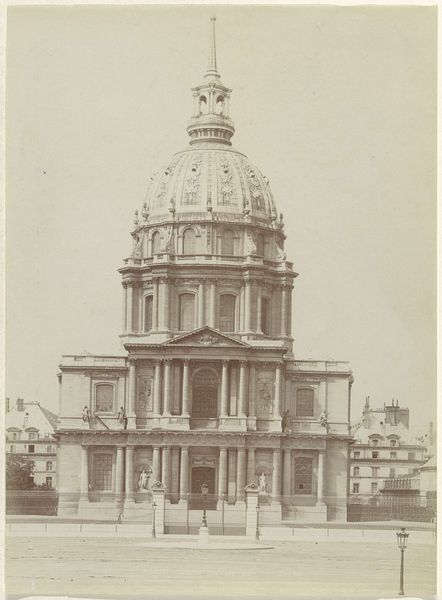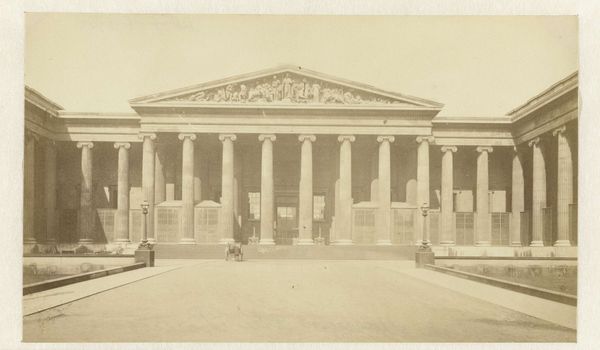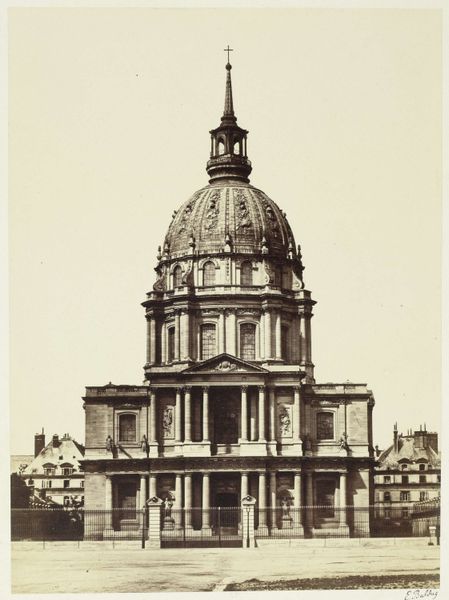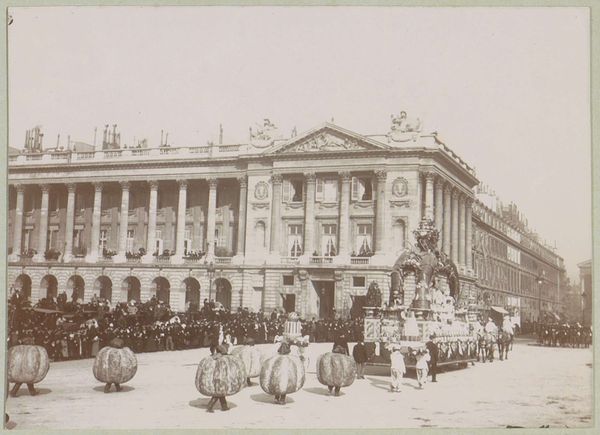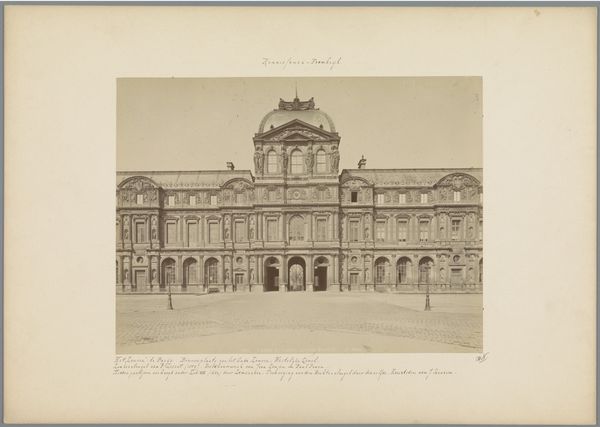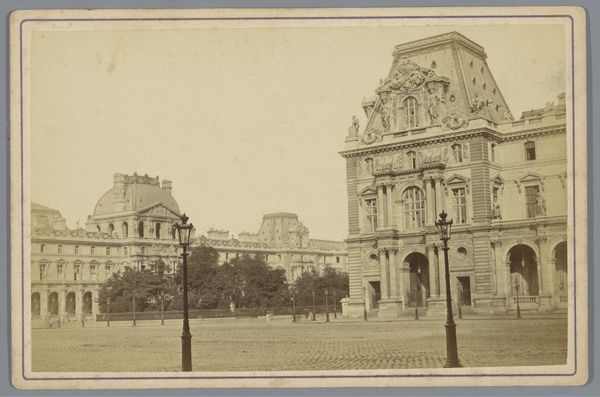
photography, albumen-print, architecture
#
landscape
#
photography
#
historical photography
#
19th century
#
cityscape
#
albumen-print
#
architecture
#
realism
Dimensions: height 133 mm, width 205 mm
Copyright: Rijks Museum: Open Domain
Curator: This albumen print, taken by James Valentine sometime between 1870 and 1890, captures the courtyard of the Old University of Edinburgh. It's currently held here at the Rijksmuseum. Editor: It possesses such a serene, almost solemn atmosphere. The sepia tones contribute to a feeling of stepping back into a dignified past. There is this rigidness, and then these perfectly posed horses waiting. Curator: Yes, photography like this from the 19th century often played a role in solidifying and promoting civic pride. Here, the university—a major symbol of Scottish intellectual life—is presented as an institution of enduring strength. Editor: The architecture is really the focal point. Look at the dome, how it evokes those ancient temples dedicated to wisdom, that almost sacred pursuit of knowledge. It uses symbols from the past to present its significance. Curator: Precisely. And the perspective emphasizes the building's grandeur. The use of carriages in the courtyard wasn’t just for practical transport, but were meant to show affluence and position, suggesting the university's connection to the societal elite. The placement implies how crucial the university was to Edinburgh's power. Editor: I'm struck by how few people there are; and even when they are present, there is something quite static in their positioning. The figures add an important note, reminding us that the symbolism also concerns individuals involved in an experience. The entire scene carries this monumental air, projecting the gravitas of tradition, power, and prestige into the present and, by extension, into the future. Curator: It’s fascinating to see how photography, even early on, was used to create very specific and powerful narratives about institutions and cities. It provides, perhaps, a view of history through a controlled lens. Editor: It’s definitely more than a simple document; it becomes a repository for cultural memory, even nostalgia, reminding us of the powerful emotions that objects and places evoke.
Comments
No comments
Be the first to comment and join the conversation on the ultimate creative platform.
